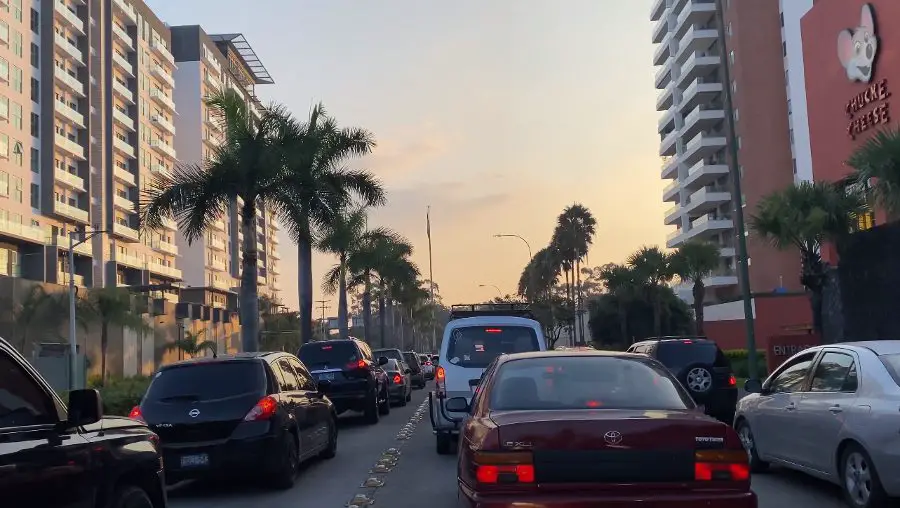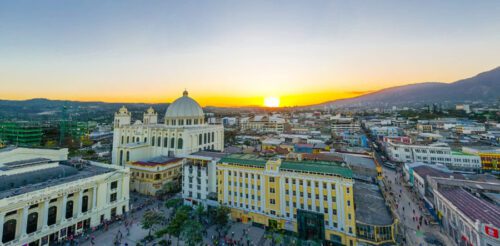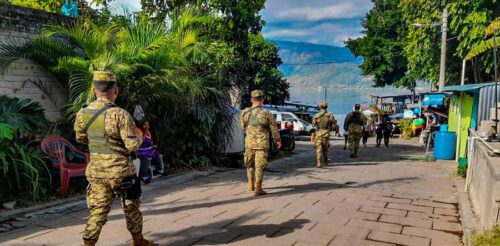To drive in El Salvador, you must be 18 years old and have a valid driver’s license from El Salvador or your home country with an unexpired passport. An international driver’s license is not required but recommended, especially if your driver’s license is not in Spanish or English.
Getting behind the wheel in El Salvador offers a unique and exhilarating experience for those seeking to explore this vibrant Central American nation.
Driving in El Salvador is similar to other countries, such as the United States. Driving is done on the right side of the road, and overtaking occurs on the left. However, there are things that you need to be aware of before getting behind the wheel in El Salvador.

International Drivers
Any foreigner can drive in El Salvador with a driver’s license from their country of residence and a valid passport. To drive in El Salvador, you do not need to have an international driver’s permit; however, it is recommended to have one.
International drivers need to be aware that many Salvadoran drivers have a reputation for being irresponsible on the road. For instance, they do not always use turn signals and suddenly will cut in front of you.
Foreigners need to drive defensively, as some drivers in El Salvador will opt not to follow traffic rules. These aggressive drivers will do what they believe is comfortable for them when on the road, not caring about other drivers.
To sum up, stay calm and always yield to aggressive drivers; however, there are times that you must be aggressive on the road to get to the places you wish to go.
Driving in El Salvador
Driving in El Salvador, especially in congested urban areas, is not as easy as driving in the US or other larger cities worldwide. Many drivers in these cities have a reputation for not following the rules. Also, a large percentage of these drivers do not have a driver’s license.
On the other hand, driving in the Salvadoran coastal areas or small towns is more relaxed. Drivers will still have to deal with a few crazy drivers and traffic, but it is not as bad as driving in the larger congested cities.
Driving in El Salvador might be scary at the beginning. Nevertheless, once drivers do it a few times, they get used to being behind the wheel, even in the larger, congested urban areas.
Driving in Larger Urban Areas
Drivers in larger urban areas, such as San Salvador, San Miguel, Santa Ana, and Santa Tecla, have to be more attentive and aware of aggressive drivers. If you plan to drive in these urban areas, you need to pay attention at all times.
Driving in Rural Areas
Driving in rural Salvadoran areas is more relaxing because there is less traffic, and most drivers are not as aggressive. However, drivers still need to be vigilant for farm animals and pedestrians.
On rural roads, it is expected to see cows, horses, and other animals in the middle of the streets unattended. Furthermore, it is typical to see people walking around and hanging out on the side of these roads, even at night.
Driving at Night
You should avoid night driving in El Salvador unless you have been driving in El Salvador for a while and know where you are going.
Driving in El Salvador at night is more dangerous. In larger cities, drivers will be dealing with poor visibility due to lousy lighting and have to deal with potential drunk drivers.
On the other hand, drivers on smaller roads have to deal with darkness; most small roads have no street lights. Also, as previously mentioned, on rural roads, you need to be aware of farm animals and people in the roadway.
Staying on the Main Roads
Staying on the main roads is recommended, but it is more about personal safety. Venturing into smaller streets or roads can lead you to unsafe areas. Furthermore, if you get lost or have car troubles in these areas, it will not be easy to get someone to help you, especially at night.

The following information about driving in El Salvador is necessary to know if you are driving in the country for the first time. This information will aid in navigating El Salvador’s roads.
- How safe is it to drive in El Salvador?
- How bad are the Salvadoran roads?
- Do Salvadorans carry car insurance?
How Safe is it to Drive in El Salvador?
Driving in El Salvador is not entirely safe; the country has a high accident rate. For instance, from January 1 to August 24, 2023, El Salvador had 6,911 people injured in traffic accidents. That is a high number for such a small country.
According to a report by La Prensa Grafica Newspaper, traffic injuries have increased by 6.5% compared to the same 2022 period (January 1 to August 24).
These are only the reported injuries; the number could be higher if we add non-reported injuries from minor traffic accidents.
Some of the most common causes for these accidents are distracted drivers, invading lanes, not respecting traffic signs, failure to keep a regulatory distance, excessive speed, and drunk driving.
It is essential to point out that the current administration is being proactive in trying to reduce traffic accidents. Nevertheless, being alert and adopting a defensive driving approach is a necessity for anyone wishing to navigate the roads of El Salvador.
How Bad Are the Salvadoran Roads?
The Salvadoran roads are not that bad; as a matter of fact, they are some of the best in the region. The streets in large cities are maintained regularly; nevertheless, potholes and dirt are typical sights on many roads.
Roads in smaller towns or rural areas are maintained, but not as regularly as those in larger urban areas or principal roads. Drivers on these roads have to be vigilant of potholes and trash. Also, roads in these smaller towns and rural areas are single lanes and are not adequately marked.
The current government is investing a lot of money in the country’s infrastructure, especially roads; for example, the road to Surf City bypass and the Gerardo Barrios highway.
The Salvadoran’s roads range from well-maintained highways to narrow, winding routes in poor conditions and no traffic signals. Traffic can be chaotic on many of these roads.
Lastly, local customs, like honking, are common, and road conditions can vary depending on what part of the country you are driving, so caution is crucial when driving in El Salvador.

Do Salvadorans Carry Auto Insurance?
Auto or driver’s insurance is not required to drive in El Salvador; therefore, most drivers on Salvadoran roads carry no insurance. Clearly, any car rental will demand drivers to have car insurance or buy it from them.
Drivers who get into minor accidents negotiate and come to an agreement with the other person involved in the accident on the spot.
However, more severe accidents will require the police to create a report. Then, both parties will settle on a monetary settlement if the responsible person has no insurance.
If you’re planning to drive in El Salvador, make sure you have insurance. Also, make sure you read the details of your policy, especially when it comes to covering the cost of minor accidents and uninsured drivers.

Driving in El Salvador
Driving is the best form of transportation in El Salvador; it is the fastest and safest way to get to any location in the country. Anyone looking to drive in El Salvador needs to be aware that driving in El Salvador is not as easy as driving in other nations.

 Driving in San Salvador.
Driving in San Salvador.



